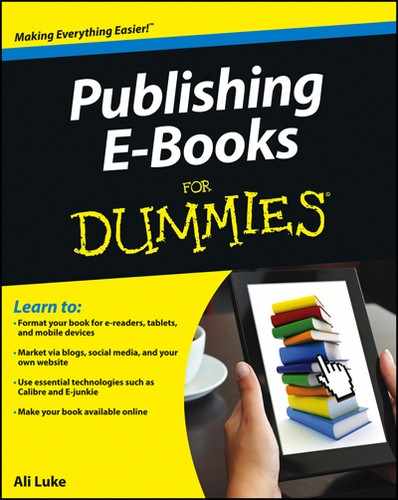Pricing Your E-Book As a Self-Publisher
Whenever an author signs a book contract with a traditional publisher, the publisher sets the price of the book. Examine a few book jackets in a nearby bricks-and-mortar store, and you can see a lack of pricing variety (except in some specialized cases, such as textbooks). You can expect a typical genre paperback, for example, to be priced around $14 to $16 — you won’t find a thriller paperback priced at $3.99 or $29.99.
As a self-publisher, you have full control over every aspect of your e-book, including its price. Of course, selling your e-book only via specific stores is limiting (for example, the minimum price allowed at Amazon is 99 cents), but you can sell your e-book exclusively from your own site instead and at any price you want.
Charging what you want (or nothing at all)
No legal standard exists for setting the price of an e-book — you can let readers download your e-book for free or for hundreds or thousands of dollars (which likely isn’t the best strategy for attracting sales).
Many authors, particularly of nonfiction, use free e-books to entice potential customers to join their e-mail lists. This strategy draws in customers and helps build strong relationships with them, especially when working on a specialized e-book that will command a high price when it’s published.
You can list your e-book for free on sites such as Smashwords, which acts as a distributor for most major e-bookstores, with the exception of Amazon. (See Chapter 14 for more on Smashwords.)
The price you charge (or don’t charge) for your e-book is entirely up to you. Whatever its price, someone will almost always consider it too high, so don’t be put off by any negative comments you see. If the price you’ve set is fair and reasonable for the value that readers receive — and if you’re making sales — stick with it.
Changing the price of your e-book as frequently as you want
Because the recommended retail price (RRP) of a print book is usually listed on its back cover, a brand-new print run is required to raise the price — though special offers may be applied to lower it without having to replace the cover.
Your e-book’s price is listed on its sales page on your website, if you have one, and on your e-book’s page in online stores. Updating the price online is usually quick and easy, and you can do it as often as you like. If you’ve written a novel, for example, you might start off selling it at $2.99 to generate interest and raise the price to $4.99 later, after you’ve attracted reviews and social media chatter.
You can also change the price if you update or expand your e-book. Perhaps you’ve written a niche nonfiction e-book with a small but extremely interested target audience. You can sell the e-book initially for $29 and then bundle it with extra features, such as recorded interviews with experts in your field or video demonstrations to tie in with each chapter, and raise the price considerably.

 If you’re willing to make your e-book available exclusively to Amazon for 90 days, you can enroll it in the Kindle Direct Publishing (KDP) Select program and then offer it for free to Amazon users for five days within that period. Amazon Prime users (in Amazon’s membership program) can borrow the book during the 90-day period for free. (See Chapter 13 for more on KDP.)
If you’re willing to make your e-book available exclusively to Amazon for 90 days, you can enroll it in the Kindle Direct Publishing (KDP) Select program and then offer it for free to Amazon users for five days within that period. Amazon Prime users (in Amazon’s membership program) can borrow the book during the 90-day period for free. (See Chapter 13 for more on KDP.)